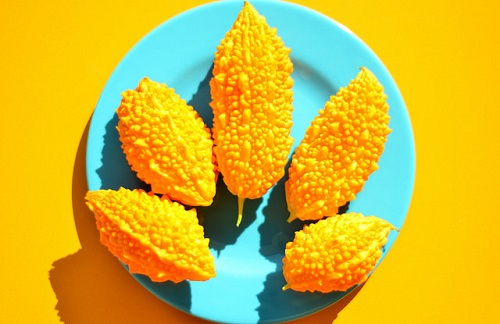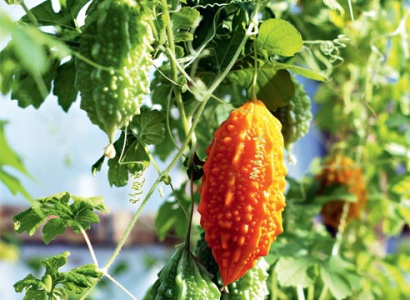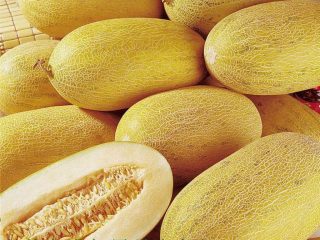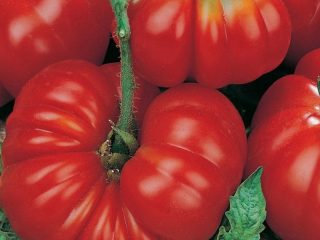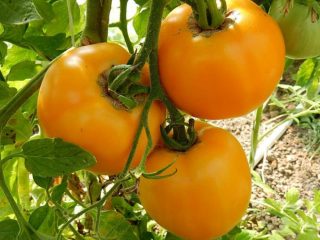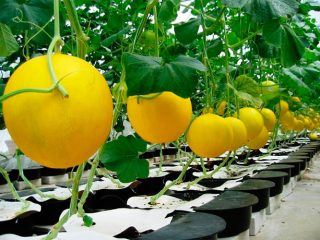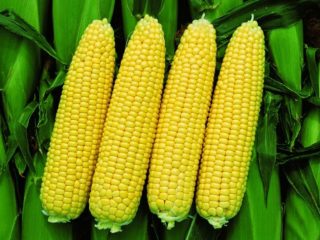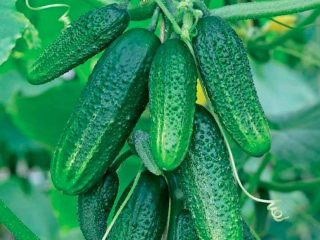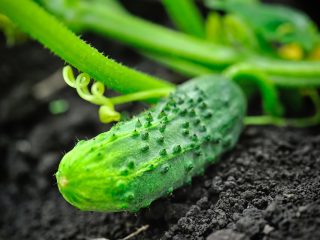Content
Momordica Cochin (also gak or karela) is an annual herbaceous climbing plant of the Cucurbitaceae family, widespread in Asia. In Russia, this fruit crop is not so well known, however, the beneficial properties of the plant and its unpretentiousness have already earned favorable reviews from gardeners. In addition, Momordica Cochin is often grown as a decorative element, filling the free space of balconies and loggias with lush vines.
General description of the plant
Momordica (in Asia another common name for the plant is Gak) is a herbaceous vine that quickly entwines the nearest supporting structures. The fruits of the plant in appearance resemble large overripe cucumbers or melon, which is why Momordica is often called Indian cucumber or Chinese melon in common people.
The stems of Momordica Cochin are very strong, despite the fact that their thickness often causes some concern. The vine can look quite fragile and unreliable. The length of the plant varies from 2.5 to 4 m. The leaves of Gaka are large and rich green in color.
The flowers have yellow tones.There is a significant difference between male and female flowers - while the former are located on tall peduncles, the latter grow on short peduncles. In addition, female flowers are smaller in size than male ones. The male flowers bloom first, followed by the female ones, giving the vine a decorative appearance. Reviews from those who grow Momordica Cochin, especially note the rich jasmine aroma of the plant.
The diameter of the ripened fruits of Momordica Cochin can reach 12 cm, the average length is 20-25 cm. The surface of the fruit is uneven - the skin is warty, speckled with many small growths. The skin color varies from yellow to orange.
Momordica Cochin seeds are flat, with a pungent odor. The pulp is juicy, dark red in color. The taste of ripe fruits is pleasant, but reviews note a slight bitter aftertaste.
Habitat
In Europe, Momordica Cochin is not found in the wild. Here the plant is grown as an ornamental or fruit crop only in greenhouses and botanical gardens. In Asia, Momordica Cochin is common as a wild plant in:
- Thailand;
- Cambodia;
- India;
- Vietnam;
- China;
- Laos;
- Malaysia;
- as well as in the Philippines.
Composition, nutritional value and calorie content of exotic fruits
The beneficial properties of Momordica Cochin are due to the rich chemical composition of all parts of the plant: fruits, leaves and roots. The content of the following substances in Gaka is especially high:
- menthol;
- arginine;
- alanine;
- glycine;
- lutein;
- lanosterol;
- lycopene;
- stigmasterol;
- stearic acid;
- ascorbic acid;
- riboflavin;
- niacin;
- micro- and macroelements (sodium, magnesium, manganese, nickel, phosphorus, copper, iodine).
The calorie content of Gak is only 19 cal per 100 g.
Benefits and harms
Regular moderate consumption of Gaka brings undeniable benefits to the body. Momordica Cochin has the following effects on human health:
- strengthens the immune system;
- increases the overall tone of the body;
- prevents the development of gastrointestinal diseases;
- normalizes the activity of the female organs of the genitourinary system;
- has a preventive effect against cancer;
- relieves headaches;
- increases hemoglobin levels;
- improves blood clotting;
- normalizes blood sugar levels;
- helps with rheumatism, relieves pain in joints and muscles;
- reduces the risk of developing cardiovascular diseases;
- reduces tension in the nervous system, which helps with insomnia, chronic fatigue and depression;
- has a regenerating effect in purulent-inflammatory processes;
- reduces swelling;
- normalizes lymph exchange processes, disruption of which leads to the formation of cellulite;
- improves metabolism;
- removes waste and toxins from the body;
- helps improve vision;
- stimulates the production of collagen and elastin;
- heals burns and mechanical damage to the skin;
- helps get rid of skin imperfections when applied externally;
- Momordica Cochin seeds have an antifever effect;
- The root of the plant is used as an expectorant for bronchitis.
Despite the extensive list of beneficial properties, Gak also has a number of contraindications. In particular, this product is not recommended for use in the following cases:
- During pregnancy, eating dishes from Momordica Cochin can cause a miscarriage, since its fruits have too intense a tonic effect on the uterus.
- When breastfeeding, there is a high risk of the baby developing an allergic reaction.
- Children under 3 years of age are not able to fully absorb the substances contained in the fruits of Momordica Cochin.
- With increased sensitivity of the laryngeal mucosa. The pulp of the fruit provokes a severe sore throat in this case.
- It is better not to include dishes from Momordica Cochin in the diet if you have urolithiasis. Regular consumption of the fruits of the plant makes it difficult to remove stones.
- Momordica Cochin should not be eaten if you have intestinal diverticulosis to avoid severe colic.
- During menstruation, substances contained in various parts of the plant provoke intense bleeding.
Use in cooking
Momordica Cochin has found wide application in cooking. More often, various parts of the plant are used to prepare salads, caviar and jam, while the bitterness is removed by soaking in salt water. The following recipe for caviar from Momordica Cochin is quite popular:
- The pulp soaked in salted water is finely chopped. You will need 500-600 g of pulp.
- The onion is cut into small pieces. Two large onions are enough.
- 2-3 carrots are grated on a fine grater and mixed with chopped garlic (4-6 cloves).
- All ingredients are mixed and placed in a frying pan.
- The mixture is fried in sunflower oil until a soft paste forms.
- During the frying process, the caviar is salted and peppered to taste. Once fully cooked, you can additionally pass the mixture through a blender or mash it with a fork for better homogeneity.
To prepare cold jam, the pulp is dried on paper towels, then mixed with lemon and orange, and mashed in a meat grinder. Gaka seeds are also often fried in a breading of flour, eggs and sour cream, boiled and used as a vitamin supplement in soups. The taste of the fruit is emphasized by its combination with cucumbers, tomatoes, fried pork, mashed coconut, and yogurt. Powdered seeds are added to dough for sweet baking.
Growing rules
Momordica Cochin is grown from seeds, however, planting the plant in open ground is possible only in regions with a warm climate. In central and northern Russia, Momordica Cochin is grown exclusively in greenhouse conditions; growing the plant on the balcony is also quite popular. In this case, you should adhere to the following recommendations:
- Momordica Cochin does not tolerate open sunlight, so it is necessary to provide the plant with some shade. It is best to place Momordica on balconies with a western or southern orientation.
- Strong drafts and sudden temperature changes negatively affect the development of the vine. In some cases, such growing conditions lead to the death of the plant.
- It is recommended to avoid excessive watering of Momordica. Stagnation of moisture is detrimental to the root system of the plant. To ensure that excess water does not linger in the soil, good drainage is necessary.
- The vine develops best on loose soils with weak acidity.
- The root system of Momordica Cochin is quite superficial, so containers that are too large for planting vines are not used. The recommended volume of the pot or container is 10 liters. Containers smaller than 5 liters are not suitable for the plant.
- Momordica Cochin is a large plant, and its fruits are quite heavy. In this regard, the vine is grown mainly on a trellis, otherwise the shoots will break off.
- For better development, Momordica is pinched. Usually 2-3 of the strongest lashes are left.
- When growing Momordica Cochin at home or in greenhouse conditions, it is necessary to artificially pollinate the plant. To do this, use a soft brush, which is used to fan the anthers from one flower and transfer them to another.
You can learn more about growing Gak in the garden from the video below:
Some interesting facts about the Cochin Momordica
There are several interesting facts from the history of plant breeding:
- The name of the plant is based on the unusual property of the vine - it cannot be touched with bare hands before the fruits begin to ripen. Before fruiting, Momordica Cochin “bites” like a nettle, severely burning your hands. That is why the plant was named Momordica, which means “to bite” in Latin.In addition, the appearance of the vine's leaves, according to Asians, resembles a dog bite.
- Dried Momordiki pulp is an essential element of Indian curry seasoning.
- Now the plant is an affordable fruit crop that anyone can grow, however, in ancient times this was impossible. Momordica was considered a noble plant that was forbidden to be eaten by ordinary people. Moreover, violation of this prohibition was punishable by death. Momordiki dishes were prepared only for members of the imperial family.
Conclusion
Momordica Cochin is highly valued in Asia as a medicinal plant, while in Europe the taste qualities of this exotic crop are of greater interest. In Russia, Momordica is almost impossible to grow in open ground, however, this does not prevent the plant from spreading - it is planted in greenhouses and on balconies, using both as a fruit crop and as decoration. Momordica is gaining increasing popularity due to its beneficial properties and unusual taste; the relative unpretentiousness of the plant is also of no less importance.
